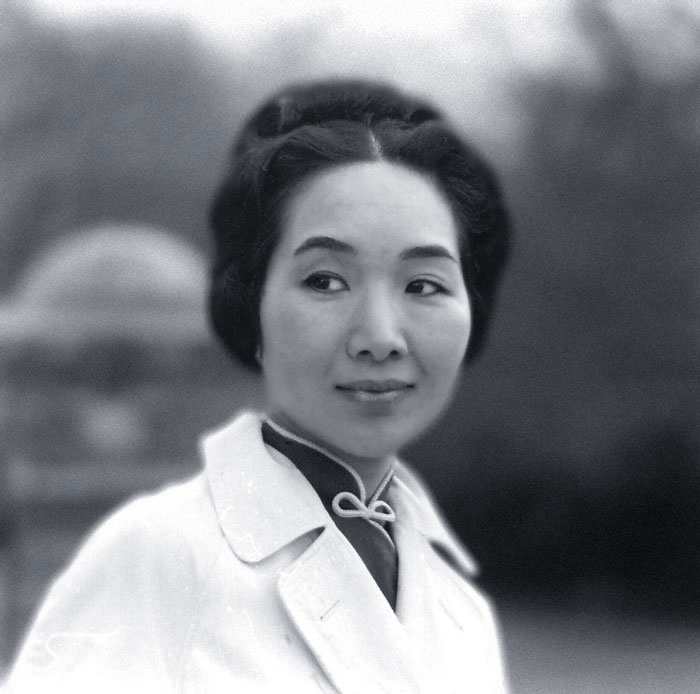01 Jan / Author Profile: Michiko Nishiura Weglyn [in Notable Asian Americans]

 Michi Weglyn’s first career, which she began at the age of 21, catapulted her to fame as the first nationally prominent Japanese American costume designer in the United States. By the 1950s, Weglyn was a regular fixture behind-the-television-scenes, best known for her flattering, successful creations for “The Perry Como Show,” a weekly musical variety hour for which she designed costumes from 1956 to 1965. As a designer, she was lauded for her ability to hide the figure flaws of some of Hollywood’s most famous celebrities at the time, including Ginger Rogers, Dinah Shore, Betty Grable, Anne Bancroft, and Jane Powell. Weglyn’s designing career, which lasted nearly two decades, took her onto the sets of many of the most popular television musical variety series of the late 1950s and 1960s, including “The Jackie Gleason Show,” “The Patti Page Show,” “The Tony Bennett Show,” and “The Dinah Shore Show.” She eventually established her own manufacturing and design studio.
Michi Weglyn’s first career, which she began at the age of 21, catapulted her to fame as the first nationally prominent Japanese American costume designer in the United States. By the 1950s, Weglyn was a regular fixture behind-the-television-scenes, best known for her flattering, successful creations for “The Perry Como Show,” a weekly musical variety hour for which she designed costumes from 1956 to 1965. As a designer, she was lauded for her ability to hide the figure flaws of some of Hollywood’s most famous celebrities at the time, including Ginger Rogers, Dinah Shore, Betty Grable, Anne Bancroft, and Jane Powell. Weglyn’s designing career, which lasted nearly two decades, took her onto the sets of many of the most popular television musical variety series of the late 1950s and 1960s, including “The Jackie Gleason Show,” “The Patti Page Show,” “The Tony Bennett Show,” and “The Dinah Shore Show.” She eventually established her own manufacturing and design studio.
In 1967 after the “The Perry Como Show” commitment ended, Weglyn’s life changed dramatically. In a 1976 article in Pacific Citizen, a childhood friend referred to the change as “the radicalization of Michi Weglyn.” From glamorous designer, Weglyn metamorphosed into an acclaimed historical writer. It was the height of the civil rights movement of the late 1960s. Then-U.S. attorney general Ramsey Clark appeared on a television show and stated that there had never been, and never would be, concentration camps in America. Having spent more than two years of her life at the camp in Gila (pronounced heel-ah) River, Arizona, Weglyn justly referred to Clark’s words as “an outright lie.” She recalled to Rafu Shimpo in 1993, “I decided they were not going to get away with that. That was the catalyst for my book.” That landmark work, Years of Infamy: The Untold Story of America’s Concentration Camps, exposed the horror and suffering of some 120,000 Japanese Americans imprisoned in U.S. concentration camps during World War II. Writer and activist Frank Chin called Years of Infamy “the only Asian American book to change Asian American history,” referring to its unparalleled contribution to the success of the Japanese American redress campaign of the late 1980s and early 1990s.
Farm Life
Born in Stockton, California, on November 29, 1926, Michiko Nishiura was one of the two daughters of Tomojiro and Misao (Yuasa) Nishiura. The family lived in a large, run-down house on a 500-acre farm in Brentwood, a small village in Contra Costa County, California, approximately 50 miles east of San Francisco. Growing up, Weglyn worked on the farm for a few hours before she went to school, feeding the chickens and horses. She wanted to prove to her father that she was just as valuable as the son he never had. “In Japanese culture,” Weglyn explained in a 1976 interview” with Harriet Shapiro, “it’s disastrous if a family doesn’t have an heir, a male offspring to carry on the family name and help in the fields.” …[click here for more]
Readers: Adult
